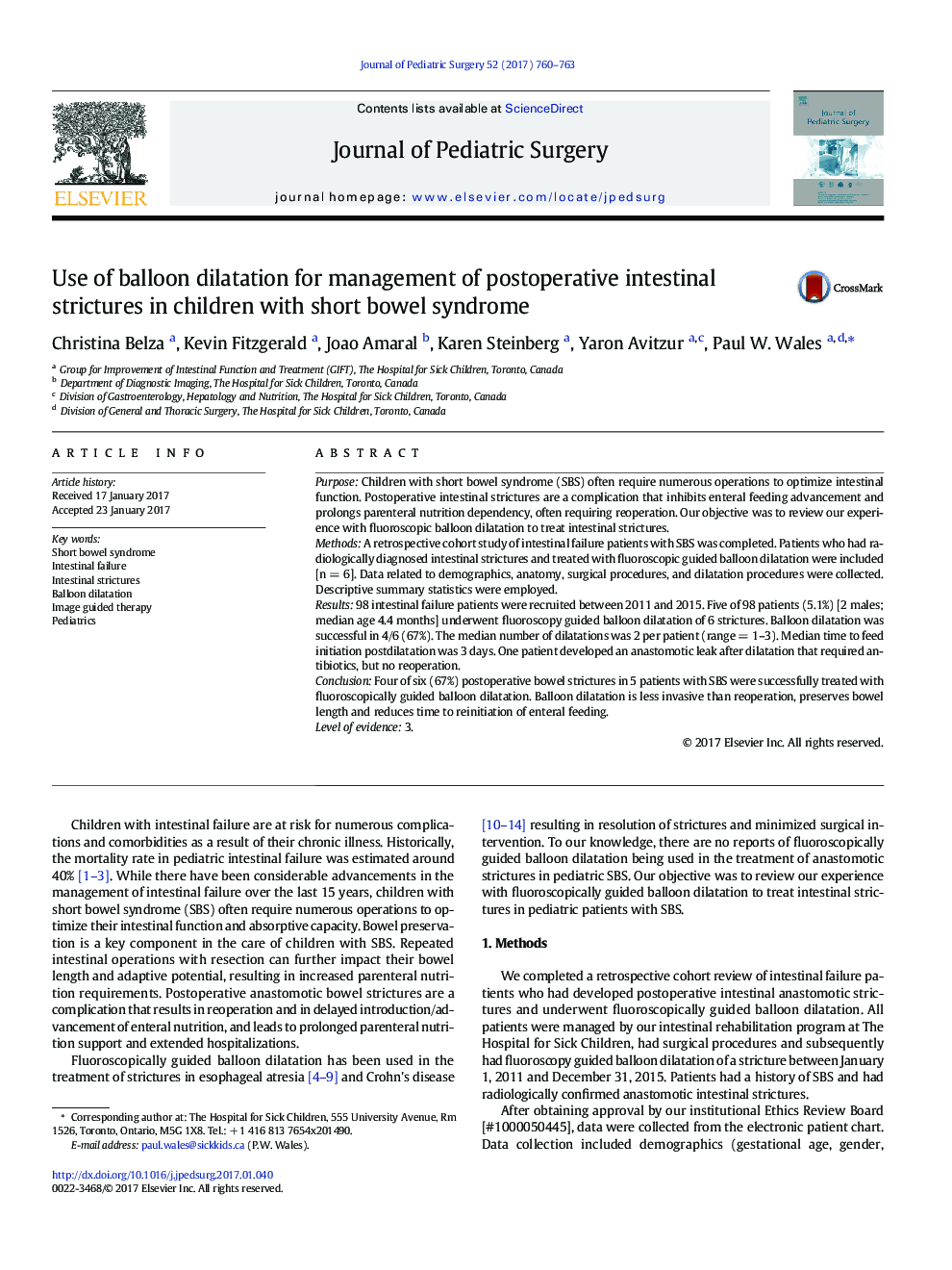| Article ID | Journal | Published Year | Pages | File Type |
|---|---|---|---|---|
| 5718459 | Journal of Pediatric Surgery | 2017 | 4 Pages |
PurposeChildren with short bowel syndrome (SBS) often require numerous operations to optimize intestinal function. Postoperative intestinal strictures are a complication that inhibits enteral feeding advancement and prolongs parenteral nutrition dependency, often requiring reoperation. Our objective was to review our experience with fluoroscopic balloon dilatation to treat intestinal strictures.MethodsA retrospective cohort study of intestinal failure patients with SBS was completed. Patients who had radiologically diagnosed intestinal strictures and treated with fluoroscopic guided balloon dilatation were included [n = 6]. Data related to demographics, anatomy, surgical procedures, and dilatation procedures were collected. Descriptive summary statistics were employed.Results98 intestinal failure patients were recruited between 2011 and 2015. Five of 98 patients (5.1%) [2 males; median age 4.4 months] underwent fluoroscopy guided balloon dilatation of 6 strictures. Balloon dilatation was successful in 4/6 (67%). The median number of dilatations was 2 per patient (range = 1-3). Median time to feed initiation postdilatation was 3 days. One patient developed an anastomotic leak after dilatation that required antibiotics, but no reoperation.ConclusionFour of six (67%) postoperative bowel strictures in 5 patients with SBS were successfully treated with fluoroscopically guided balloon dilatation. Balloon dilatation is less invasive than reoperation, preserves bowel length and reduces time to reinitiation of enteral feeding.Level of evidence3.
